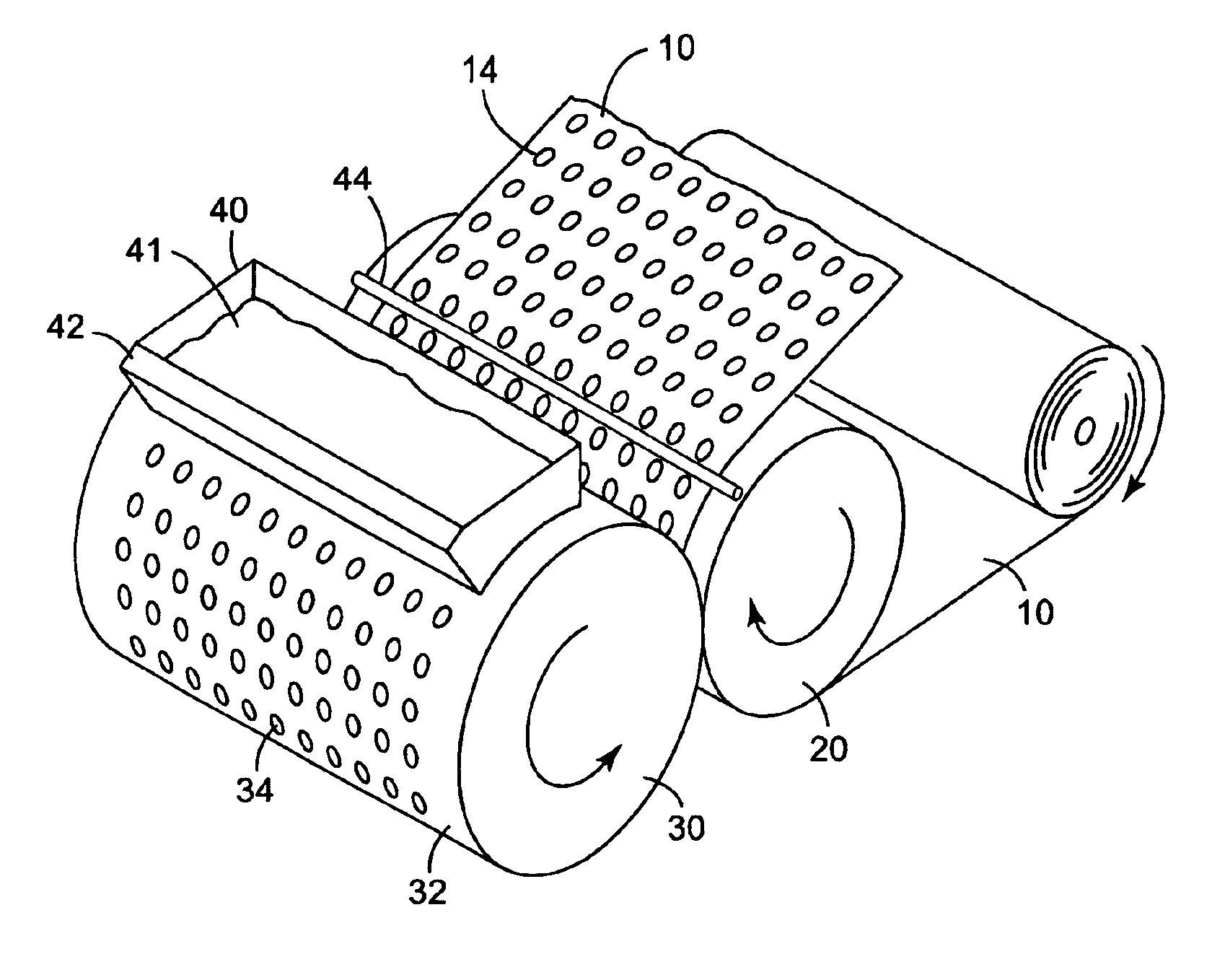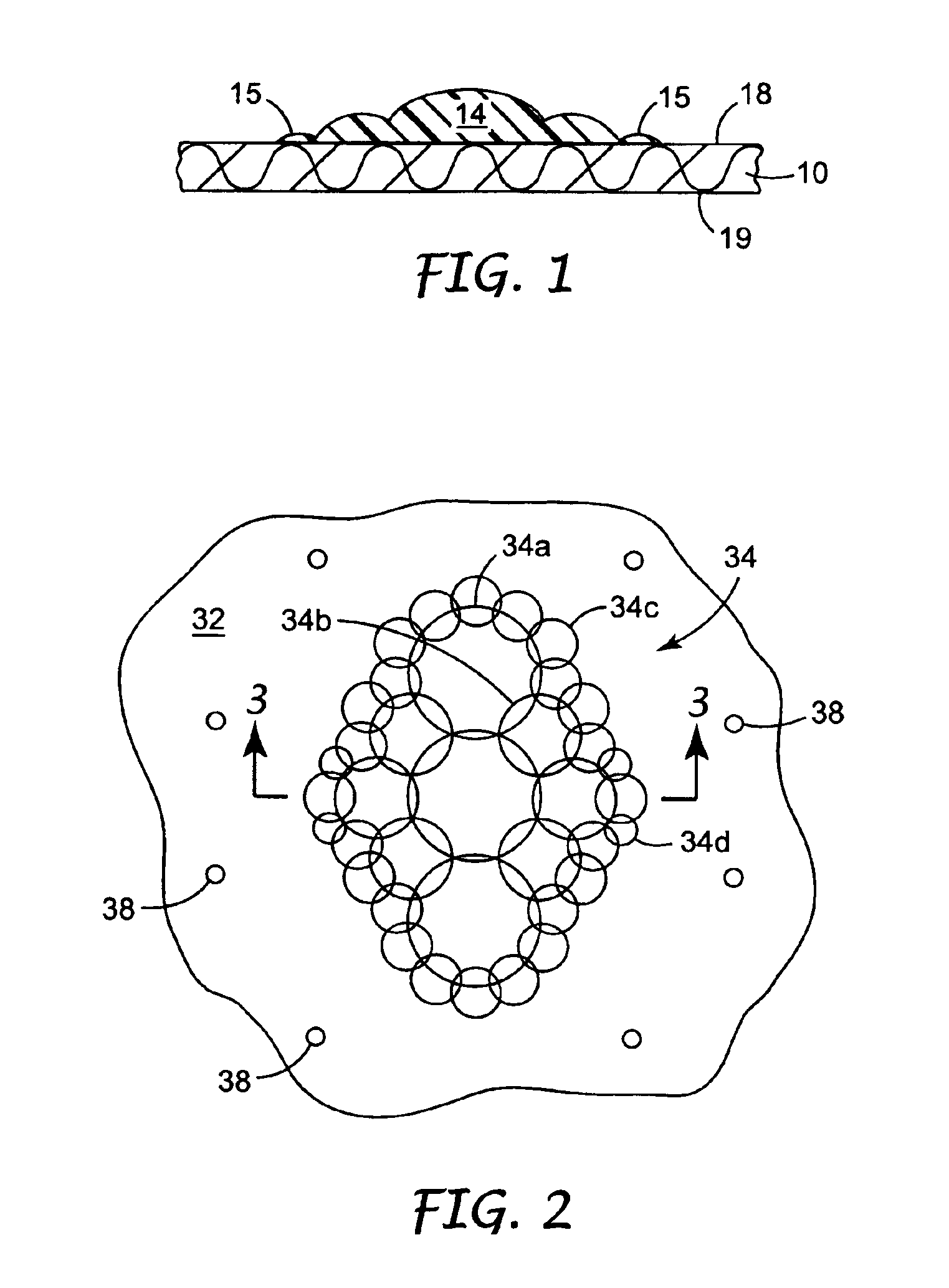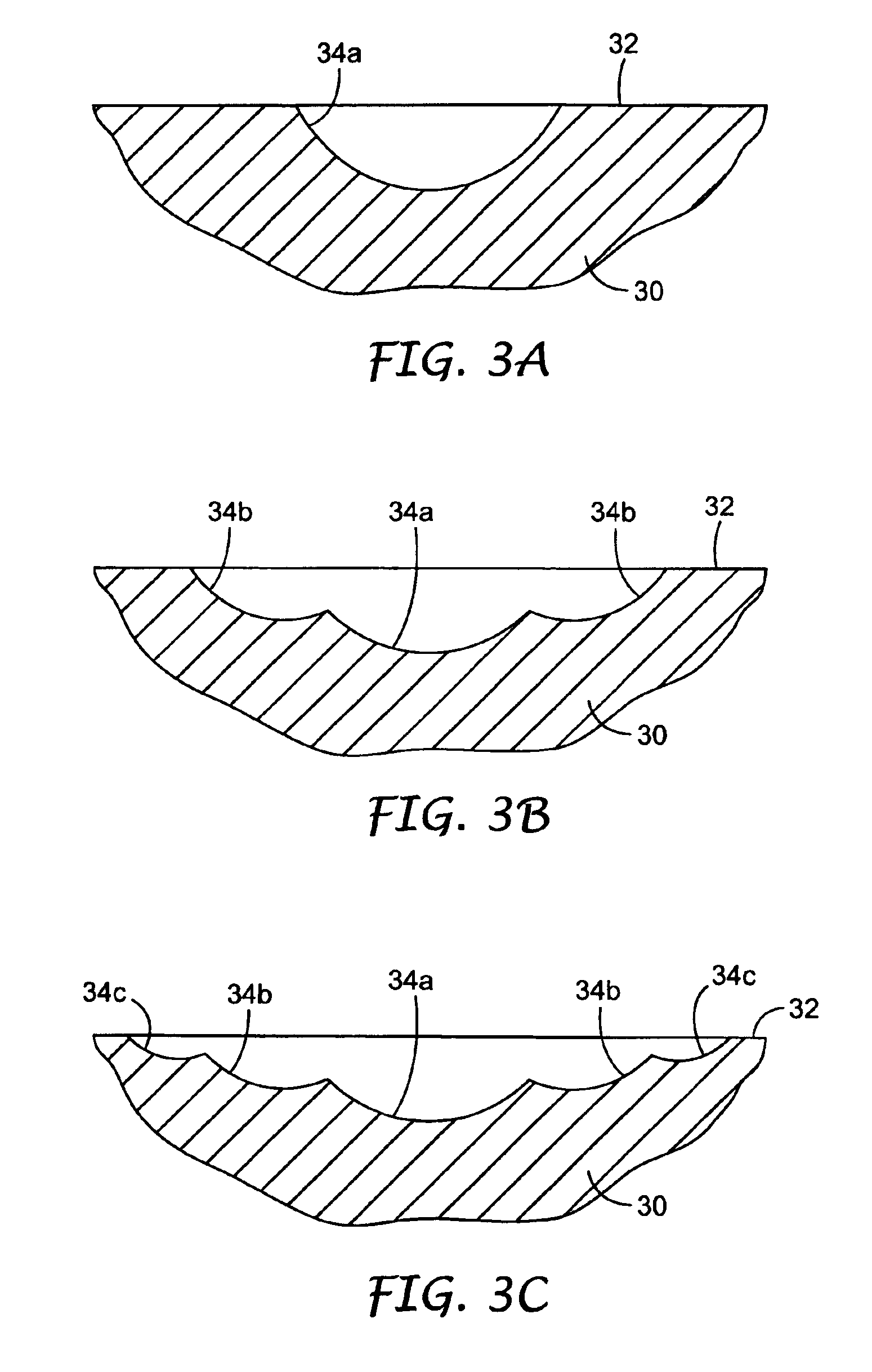Methods for producing composite webs with reinforcing discrete polymeric regions
a technology of polymeric regions and composite webs, applied in the direction of liquid/solution decomposition chemical coating, instruments, photosensitive materials, etc., can solve the problems of reducing the stiffness of the entire surface of the web, and reducing the airflow of the web, so as to improve the formation of reinforcing discrete polymeric regions and improve the transfer of relatively large discrete polymeric regions
- Summary
- Abstract
- Description
- Claims
- Application Information
AI Technical Summary
Benefits of technology
Problems solved by technology
Method used
Image
Examples
example 1
[0129]A web of the present invention was produced using a system similar to that shown in FIG. 11. A 40 mm diameter twin screw extruder fitted with a gear pump was used to deliver a molten polypropylene polymer (SC-917, Basell Olefins) at a melt temperature of approximately 227° C. to a neck tube. The neck tube was positioned such that a thick strand of molten polymer was extruded vertically downward onto the exterior surface 32 of an oil-heated steel transfer roll 30 having a diameter of 23 cm. The exterior surface of the transfer roll was machined using a computer controlled milling machine to have a circle of 8 depressions around the periphery of the roll near the center of the roll. The depressions were elliptical in shape 7.6 cm long and 1.9 cm in width at the widest point of the ellipse. The long axis of each ellipse was parallel to the machine direction (downweb). The ellipses were arranged with a center-to-center spacing of 8.9 cm. The elliptical depressions were machined in...
example 2
[0133]To demonstrate that two or more discrete reinforcing polymer regions can be transferred to two substrates followed by lamination of the substrates, a web was prepared as in Example 1 using the apparatus shown in FIG. 11 except a second transfer roll, identical to the transfer roll 30, a second rubber backup roll, similar to the rubber backup roll 20, a second doctor blade, similar to the doctor blade 42, and a second hot wire, similar to the hot wire 44, were used to transfer a discrete reinforcing polymer region to a second nonwoven substrate (SONTARA 8001 spunlaced polyester, Dupont). Molten polypropylene polymer (SC-917, Basell Olefins) was delivered to the second transfer roll at a melt temperature of approximately 227° C. The second transfer roll was at approximately 227° C., and the second rubber backup roll was at approximately 23° C. A nip pressure of 25 N / lineal cm was used. The doctor blade pressure against the second transfer roll was approximately 123 N / lineal cm. ...
PUM
| Property | Measurement | Unit |
|---|---|---|
| volume | aaaaa | aaaaa |
| area | aaaaa | aaaaa |
| lengths | aaaaa | aaaaa |
Abstract
Description
Claims
Application Information
 Login to View More
Login to View More - R&D
- Intellectual Property
- Life Sciences
- Materials
- Tech Scout
- Unparalleled Data Quality
- Higher Quality Content
- 60% Fewer Hallucinations
Browse by: Latest US Patents, China's latest patents, Technical Efficacy Thesaurus, Application Domain, Technology Topic, Popular Technical Reports.
© 2025 PatSnap. All rights reserved.Legal|Privacy policy|Modern Slavery Act Transparency Statement|Sitemap|About US| Contact US: help@patsnap.com



